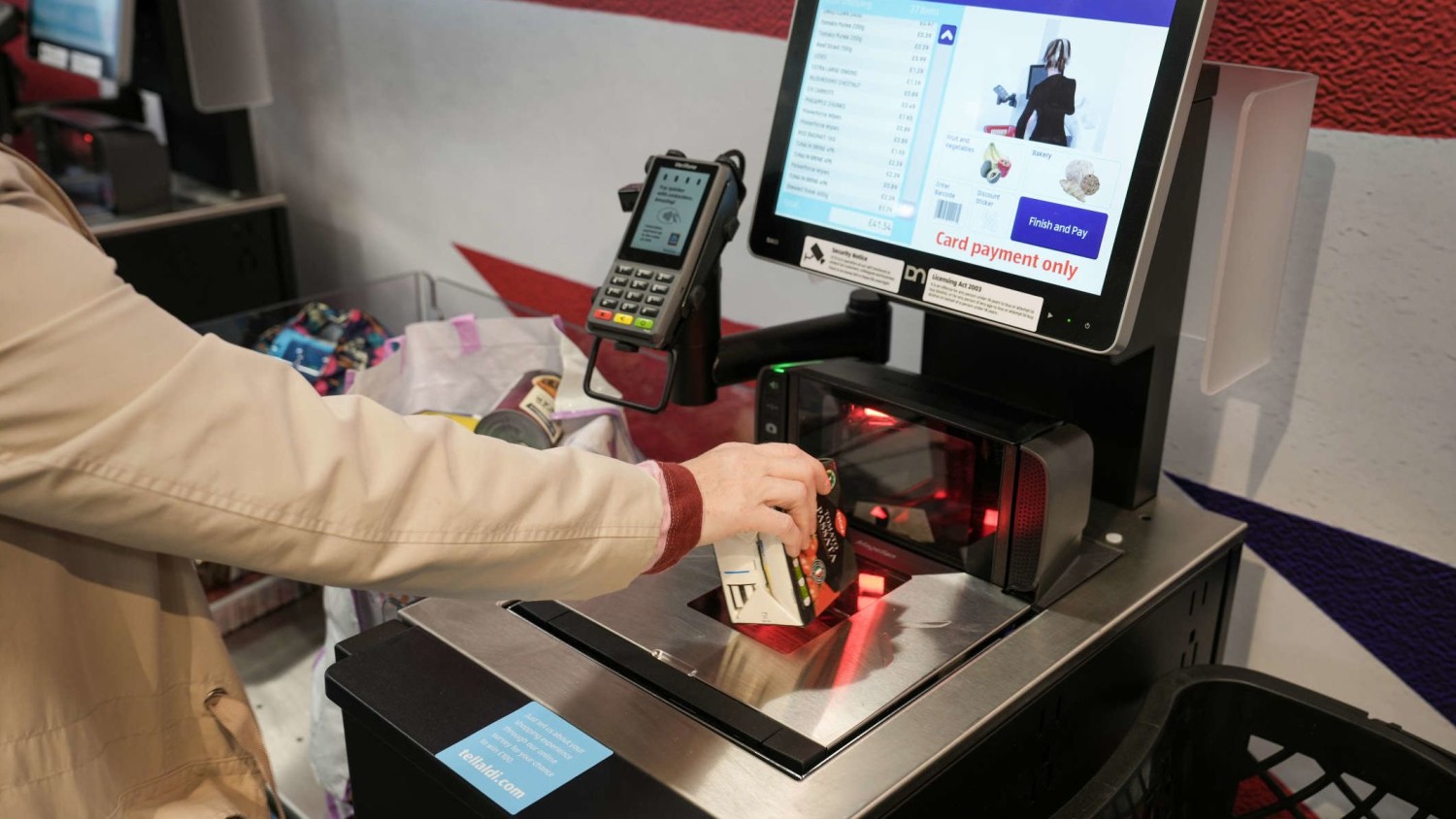
This article is more than
1 year old
A high-margin and fast-growing ad business is changing the chain’s relationship with brands
Walmart last week reported rising sales of household items such as clothes, groceries and toys. But its profits rose faster thanks in part to a product that will not fit into a shopping cart: advertising.
The world’s biggest retailer has bought myriad ads in newspapers, on television and online in its 62-year history. Now, it is selling airtime to other advertisers, competing with traditional media companies for marketing dollars.
Its US ad business, Walmart Connect, is part of an emerging industry known as “retail media”, in which big retailers flex their muscles as gatekeepers between vendors and consumers to sell ads to brands seeking an edge. US spending on retail media will exceed $54bn in 2024, Emarketer forecasts, up from $18.7bn in 2020.
Ecommerce titan Amazon is expected to hold a dominant 77 per cent share, while Emarketer’s analysts see Walmart claiming 6.8 per cent of the market, with ad revenue of $3.7bn.
Yet Walmart disclosed in an earnings release this week that its US advertising business had grown 30 per cent in the past year, rocketing past the growth rate of the company as a whole.
With Emarketer forecasting the retail media industry will reach $130bn in four years, store chains are in a land rush. Advertising is far more profitable than the roughly 4 per cent operating margin Walmart earns from selling merchandise and groceries, and brick-and-mortar retailers see a chance to seize business from their ecommerce arch-rival.
Sarah Marzano, an analyst at Emarketer, said: “Amazon is frequently the place where consumers start their product searches now instead of going to Google. With . . . retailers becoming the destination for consumers for researching what they want to buy, there’s opportunity for retailers to monetise that traffic.”

The prospects for higher-margin businesses such as advertising have excited investors, helping propel Walmart’s shares up 38 per cent this year. The retailer now ranks as the 16th largest ad seller by revenue outside China, according to Madison and Wall, a media and tech consultancy.
A leading source of business is sponsored search results on Walmart’s app and website, where vendors pay to receive prominent placement for their products. A recent online search for dish soap turned up sponsored listings from Procter & Gamble’s Dawn brand, while a search for chicken breasts offered up a variety of cuts from meatpacker Tyson Foods.
Such companies already purchase general search results on platforms such as Google. The difference in retail media is that the likes of Walmart and Amazon have data not only on what consumers see on apps, but on whether they followed through with a purchase.

“After you click on an ad at a general-purpose search engine, they don’t know what you did after that,” said Ryan Mayward, senior vice-president of retail media sales at Walmart US. “We capture the click and we also know that you checked out and bought those specific things after you were exposed [to] or interacted with the ads. That’s the core value [proposition] of retail media versus other types of media.”
Walmart is doubling down on advertising with its planned $2.3bn deal for Vizio. The connected TV maker has been losing money on device sales but earned $356.3mn in gross profit last year thanks to technology that tracks what people watch and serves them targeted ads. Agreed in February, the takeover is under review by federal competition regulators.
Unlike Amazon, Walmart has 4,600 big-box stores around the US, plus hundreds more Sam’s Club warehouse outlets. “That’s where Walmart has scale that Amazon can’t compete with,” Marzano said.
John David Rainey, chief financial officer, has noted Walmart can connect customers’ purchases to ads they viewed days before using bank card and electronic payments data. “A week goes by, you decide to buy that item in a store, we know that there was attribution related to that ad,” he told an analyst in June.
The company is not able to identify store customers who pay in cash, Mayward said.
Walmart is also increasing advertising inside its stores to complement campaigns running online. Mayward, a former Amazon executive, argued that for marketers, stores can help counter the effects of media fragmentation.
Mayward said “140mn people a week shop here. That’s a huge audience. About 110mn people tune in to the Super Bowl. That’s a greater than Super Bowl-sized audience every week coming through our stores.”
On a recent tour of a Walmart Supercenter in Springdale, Arkansas, Mayward stopped by meat and bakery counters over which digital screens had been installed. “We’re launching advertising opportunities on deli screens and on bakery screens in a few days,” he said.
At a nearby “TV wall”, where some of the televisions on sale broadcast ads placed via Walmart’s ad service, it is experimenting with sales of so-called “non-endemic” ads, for products not sold at its stores such as cars or cruises.
Advertising also punctuated the music playing in the store. “It’s a light ad load,” Mayward said. At the checkout area, screens on the self-service kiosks also flashed advertisements, in this case for T-Mobile.
How Walmart’s suppliers respond to their proliferating ad options remains uncertain. Wins for retailers “can be losses for advertisers” as they struggle to compare the performance of competing retail media networks, wrote Nikhil Lai of Forrester, a market research company. Besides Walmart, its US rival Target and grocery delivery company Instacart are among those building retail media businesses.
Even as analysts expect retail media to grow, they see the potential for new flashpoints in the relationship between big retailers and big brands — including concerns that brands will feel pressure to buy ads to improve their access to retail shelves. In a Forrester survey, 19 per cent of consumer marketing executives said their motivation for spending on retail media was to have stronger partnerships with retailers.
“I was talking to an executive at a big [consumer packaged goods] brand who said that for her, buying advertising from Walmart feels like tithing to the church,” Lai said.
There is also the question of whether consumers will tire of co-ordinated campaigns that follow them online and in stores. “Introducing digital media in unfamiliar places can be an embarrassing mistake if it doesn’t go over well with shoppers,” Emarketer noted in a report.
Walmart is aware of the risk that shoppers may find ads distracting or annoying. “We want it to be additive to the shopping experience,” Mayward said: “It’s not like, let’s detract from it a minimal amount. It has to benefit the customer in some way.”